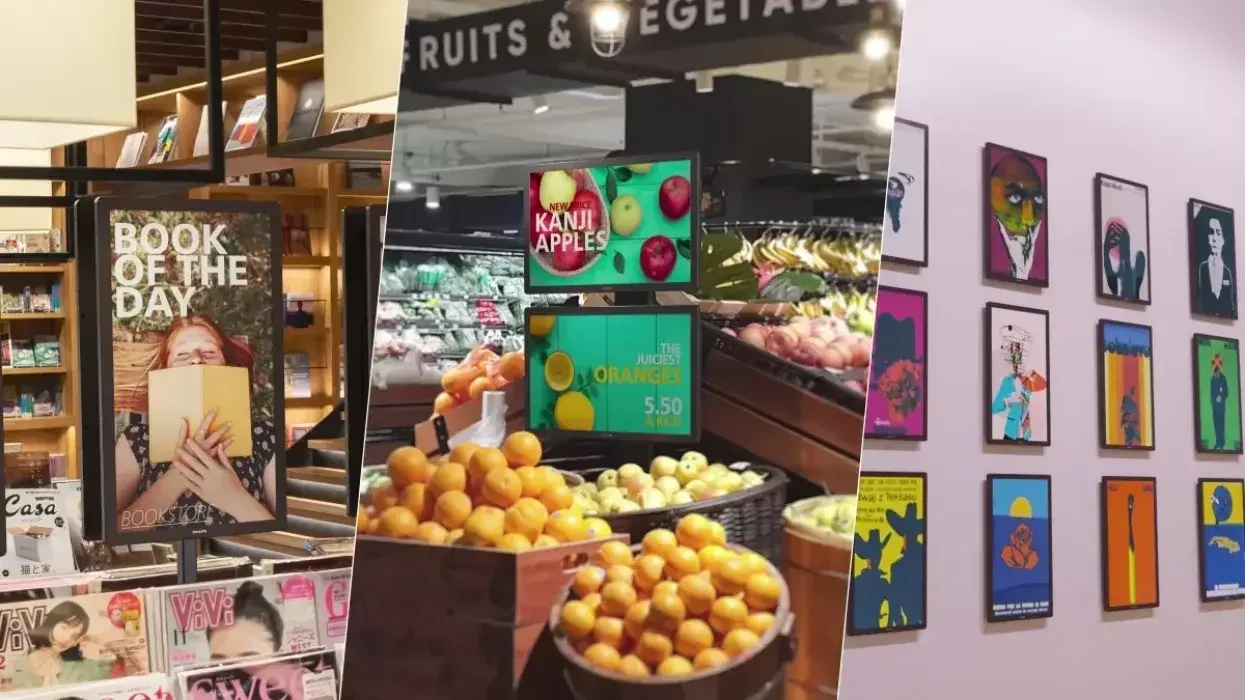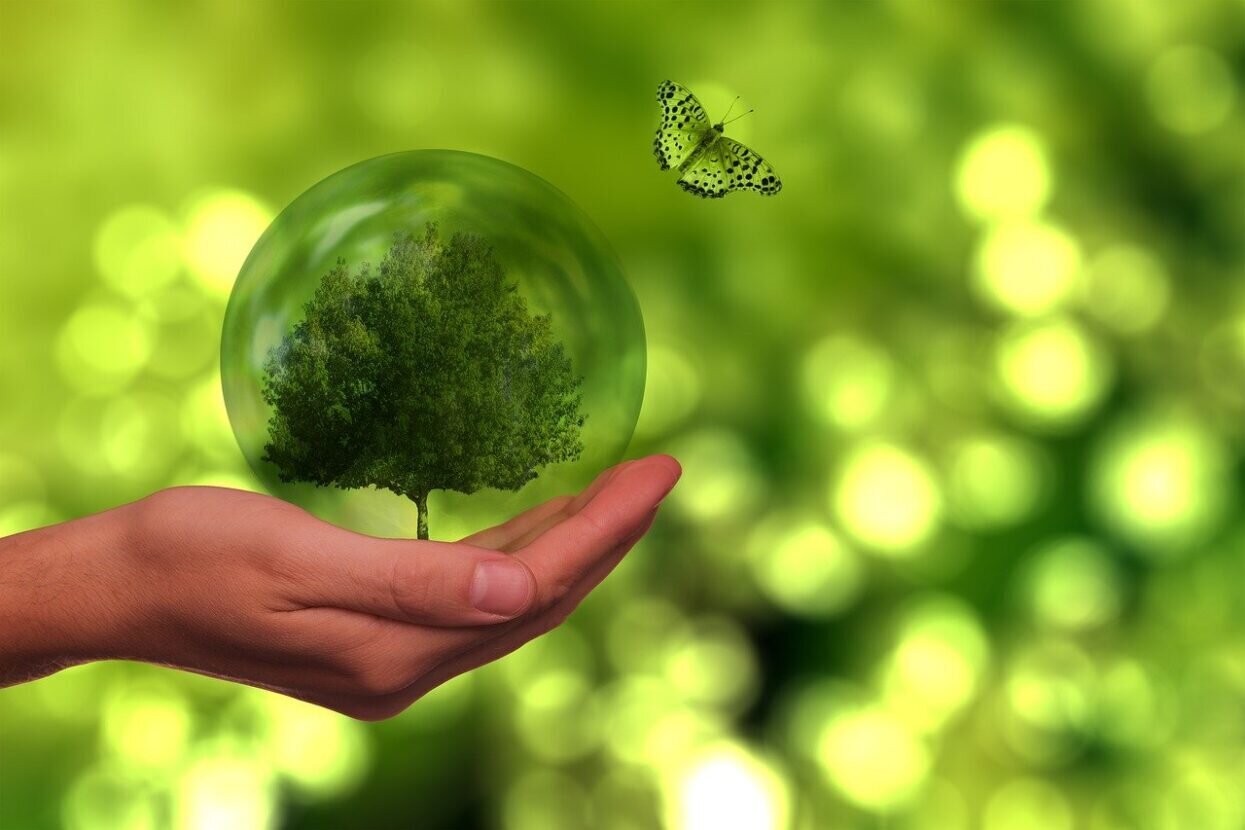
With the rise in demand for sustainable signage showing no signs of slowing down. Rob Fletcher takes a look at some of the more planet-friendly options available to those businesses working in the digital signage sector.
While once seen as an added bonus for consumers, sustainability is now an absolute must for many, with demand for environmentally friendly signage and related applications on the increase.
This trend is true of all areas of the signage market and not just reserved for the print-based applications, which, traditionally, have been regarded as more troublesome for the planet due to their use of paper and inks.
While more sustainable options have come to market in the print sector, we are also seeing significant steps being made in the digital signage segment, with businesses in this area now having access to technology and solutions to quench customers’ thirst for more planet friendly digital signage.
Setting the sustainability standard
Up first is PPDS, the exclusive global provider of Philips Professional Displays, which counts the Philips Tableaux ePaper displays among its range of solutions. Last year, PPDS broke new ground for display technology, becoming the world’s first display manufacturer to introduce full colour, large-format, 16:9 ePaper digital signage.
Developed with PPDS technology partner, E Ink, the originator and pioneer leader in ePaper technology, the Philips Tableaux range includes the 25.3” Philips Tableaux 4150, as well as the recently unveiled 32” Philips Tableaux 5150.
As to why this offers a sustainable solution to users, PPDS highlights how the technology uses what it describes as the “world’s most energy efficient digital signage offering”, in that it displays a static image with no light emissions. This method only uses very minimal power for when remotely managing the display, such as changing the image, and therefore offers a more planet friendly option.
“Sustainability in operations is of growing importance for business everywhere, as is reducing energy consumption,” PPDS vice president of global marketing and business development, Martijn van der Woude, said. “Developing new opportunities with our Philips Tableaux ePaper displays, we can offer the advertising industry a new era of more sustainable digital out of home communications.”
“Philips Tableaux displays show a static image with no light emissions and zero power, and needing only super low power when the image is changed out. What is more, with our Android SoC and Power over Ethernet included as standard on all new models, these displays are also PPDS Wave ready, allowing remote device and content management and all the efficiencies that come together with that.”

Align your goals
German telecommunications giant Deutsche Telekom is one business to have utilised this technology, working with PPDS to use Philips Tableaux ePaper Series as part of part of plans to extend its digital out of home (DOOH) communications. Michael Tölle, head of media and analytics at Telekom Deutschland, said the sustainable features of the solution stood out for the group.
“Philips Tableaux ePaper displays based on the E Ink Spectra 6 platform offer the most sustainable way to digitise the out of home advertising on our outdoor housings as they come with no light emission and almost zero energy consumption.” Tölle said.
This idea of aligning your own sustainable values with those of clients can go a long way in helping to secure regular work and establish long-term partnerships. Take JCDecaux for example; the digital display specialist linked up with energy supplier OVO on a special campaign that highlighted their commitment to the environment.
Last year, OVO became the first brand to appear on the new 60m billboard in Euston Station in London, the largest indoor DOOH screen in Europe. The creative used generative AI and API data to give live insights into Britain’s energy habits, offering interactive guidance to help consumers cut carbon dioxide by using energy when the grid is greener.
In line with this focus, the campaign was designed to only appear when the National Grid was being run on renewable energy., JCDecaux made use of real-time data to ensure it met these requirements and that the adverts only featured on the screen at these times. The ads in questions pointed to OVO’s ‘Power Move’ scheme, which rewards customers for shifting energy usage out of peak energy times, to times when the grid is powered by renewable energy.
“This epic new media opportunity brings together innovation and our mission to change the way the nation thinks about and consumes energy,” OVO director of brand and marketing Alice Tendler said. “Credit to our brilliant agency partners for finding a fresh way of transforming OVO’s insight into actionable, relatable advice at an even more ambitious and evolving scale.”
Ongoing development
Given the rising demand for solutions like this, it is safe to say that we are only set to see more ideas, products and solutions as we move forward in 2024. Take Sharp NEC Display Solutions Europe for example, which recently introduced third generation of dvLED FE Series with energy-efficient Flip Chip technology.
Created for use in indoor scenarios such as conferencing, corporate signage, command and control, broadcast, higher education, and leisure, Sharp said the new solutions offers a more planet friendly option to customers. This is due to it being equipped with Flip-Chip SMD technology to reduce energy consumption, with the FE Series being advertised as helped to contribute to sustainability goals and reduce energy bills.
Sharp has also rolled out its new Sharp ePaper 13” and 25” displays as digital alternatives to paper posters. As for their sustainable qualities, Sharp said the products operate with zero power consumption during content playback, meaning they only draw minimal power when updates are required.
For further insight into new developments and to find out more about the latest options on offer to the market, visit the European Sign Expo 2024. Running alongside the FESPA Global Print Expo 2024 in Amsterdam from 19-22 March, the European Sign Expo 2024 will play host to leading exhibitors from across the digital signage market and allow visitors to see new technologies up close. Register here to visit and use code ESEJ401.